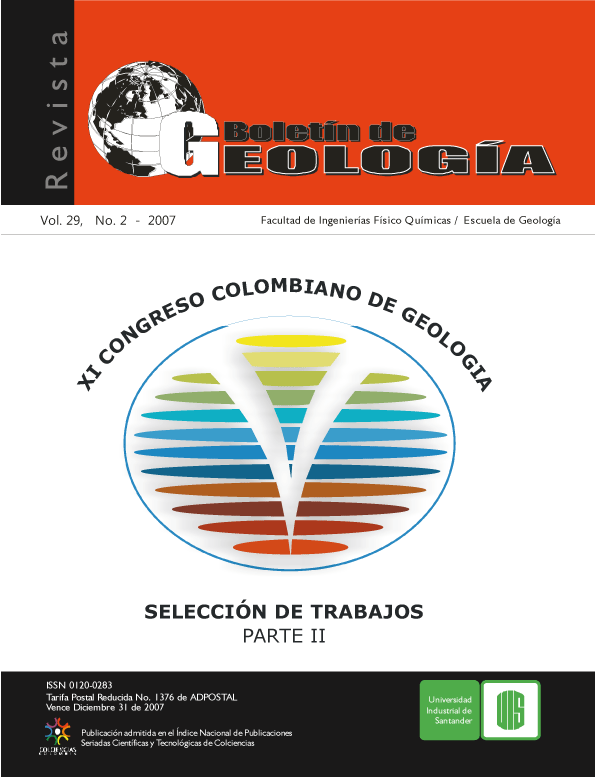OSL DATING OF STONE LINE AND OTHER SURFACE FORMATIONS LOCATED IN LLANOS DE OVEJAS, ANTIOQUIA, COLOMBIA
How to Cite
Abstract
This work marks the fst application of Photoluminescence (OSL- Optical Stimulated Luminescence) in Colombia. Photo-luminescence method allows the determination of the age of burial of materials with a range from 6 to 800 000 years under optimal conditions; the method is really important for the study of diverse quaternary deposits.
Detailed feld work, aerial photo analysis and stratigraphic study of the study area were completed with emphasis on the stoneline, a regional horizon of clastic accumulation. The aim of this work was to achieve a better understanding of the paleoenvironmental conditions when the surface formations of the area were originated, as well as the evolution of the highlands and uplift of the Central Cordillera.
The frst ages obtained in Colombia by photoluminescence correspond to the stoneline: 30 900 ± 4 500, 24 100 ± 3 800 and 18 900 ± 2 300 years for the horizons FSO 07-2, FSO 16-2A and FSO 19-2 respectively. These ages belong to the Last Pleniglacial, erosive period of dry and cold conditions with intermittent rain and scarce vegetation.
Deposits below the stoneline where dated in 53 400 ± 5 900, 66 700 ± 14 000 and 36 000 ± 4 900 years at the horizons FSO 06-3, FSO 16-3 and FSO 19-3 respectively, which indicates they were formed during the humid period from 60 000 to 28 000 years BP.
Key words: erosion surfaces, photoluminescence, stoneline, Llano de Ovejas, stratigraphy, dating methods, Central Cordillera
Downloads
References
Angélica, R. S., da Costa, M. L. and Pöllmann, H. (1996). Gold, wolframite, tourmaline-bearing lateritized gossans in the Amazon region, Brazil. Journal of Geochemical Exploration, Vol. 57, (1-3), pp. 201-215
Clapperton, C. (1993). Quaternary Geology and Geomorphol-ogy of South America. Elsevier, Amsterdam. 796 p.Fattahi, M. & Stephen, S. (2003). Dating volcanic and related sediments by luminescence methods: a review. Earth-Science Reviews, Vol. 62, pp. 229–264
Galbraith, R.F., Roberts, R.G., Laslett, G.M., Yoshida, H. and Olley, J.M. (1999). Optical dating of single and multiple grains of quartz from Jinmium rock shelter, northern Australia: Part I, experimental design and statistical models. Archaeometry, Vol. 41, pp. 339-364
García, C. sometido. Datación por Fotoluminiscencia de algunas Formaciones Superficiales del Llano de Ovejas, Cordillera Cen-tral, Antioquia. Tesis de Maestría, Universidad EAFIT. 121 p
Gómez, L. y Sánchez, M. (1999). Prospección Geológico Geoeléctrica para el Corregimiento Llano de Ovejas del Mu-nicipio de San Pedro (Departamento de Antioquia). Trabajo de Grado. Universidad EAFIT, Medellín. 97 p.
González, H. (2001). Memoria Explicativa del Mapa Geológ-ico del Departamento de Antioquia. INGEOMINAS. Bogotá, 241p
González, C., Urrego, L.E. and Martínez, J.I. (2006). Late Quaternary vegetation and climate change in the Panama Basin: Palynological evidence from marine cores ODP 677B and TR 163-38. Palaeogeography, Palaeoclimatology, Palaeoecology, Vol. 234, pp. 62–80
